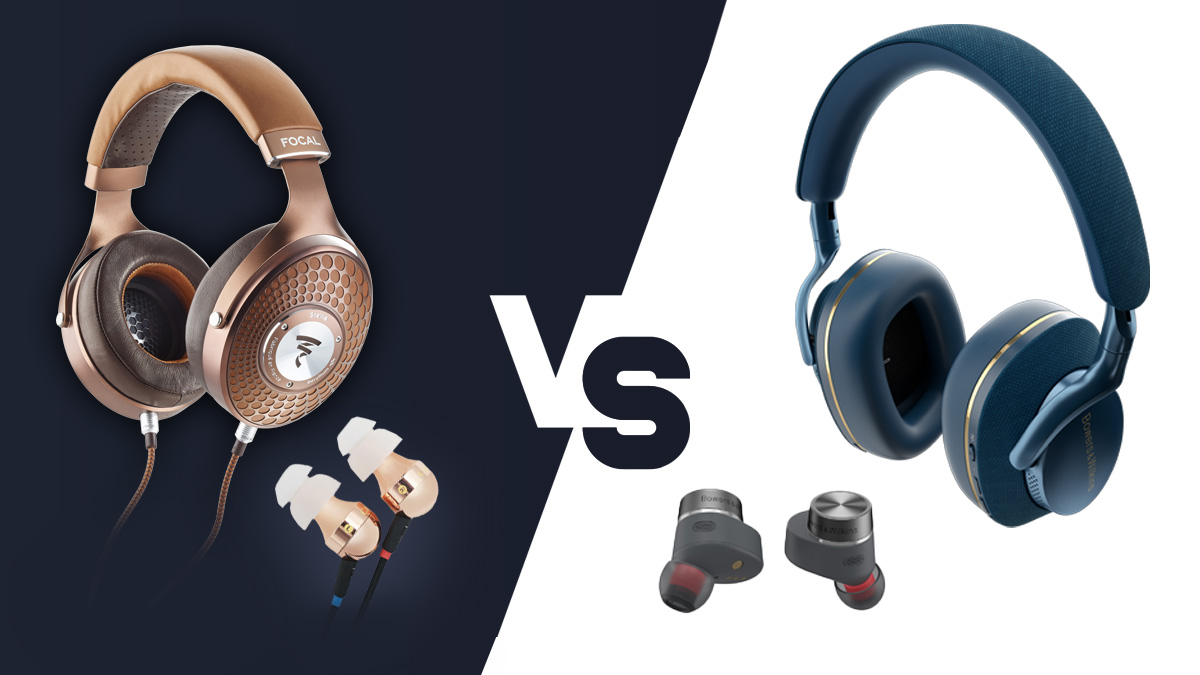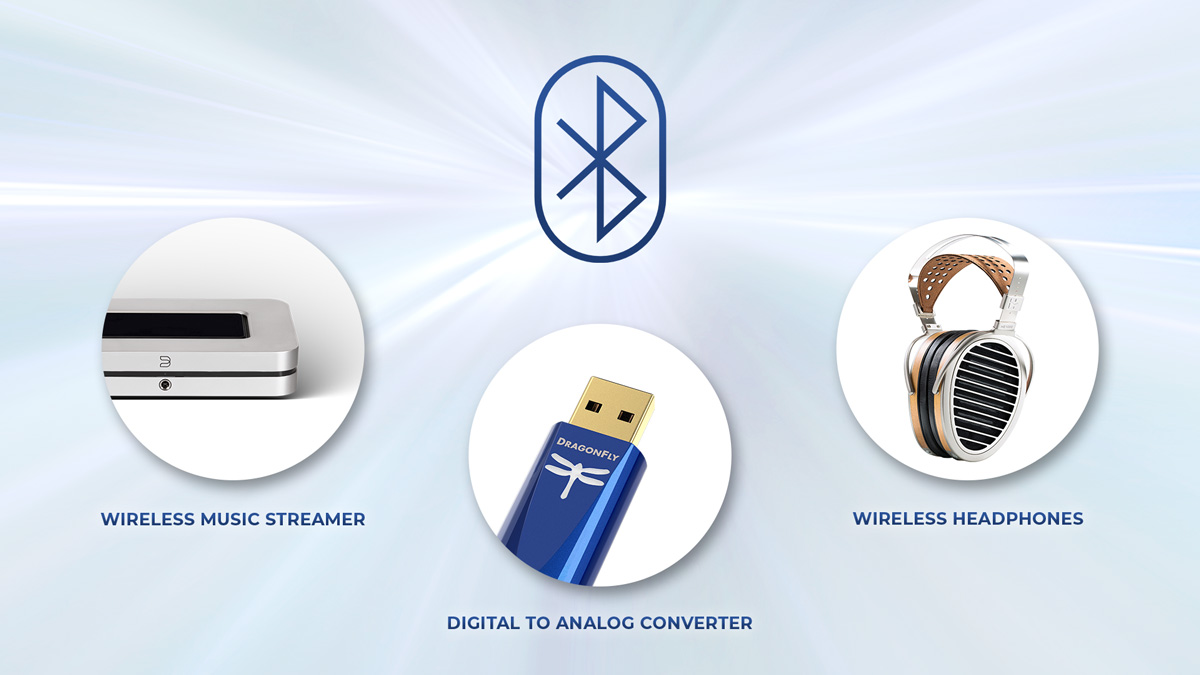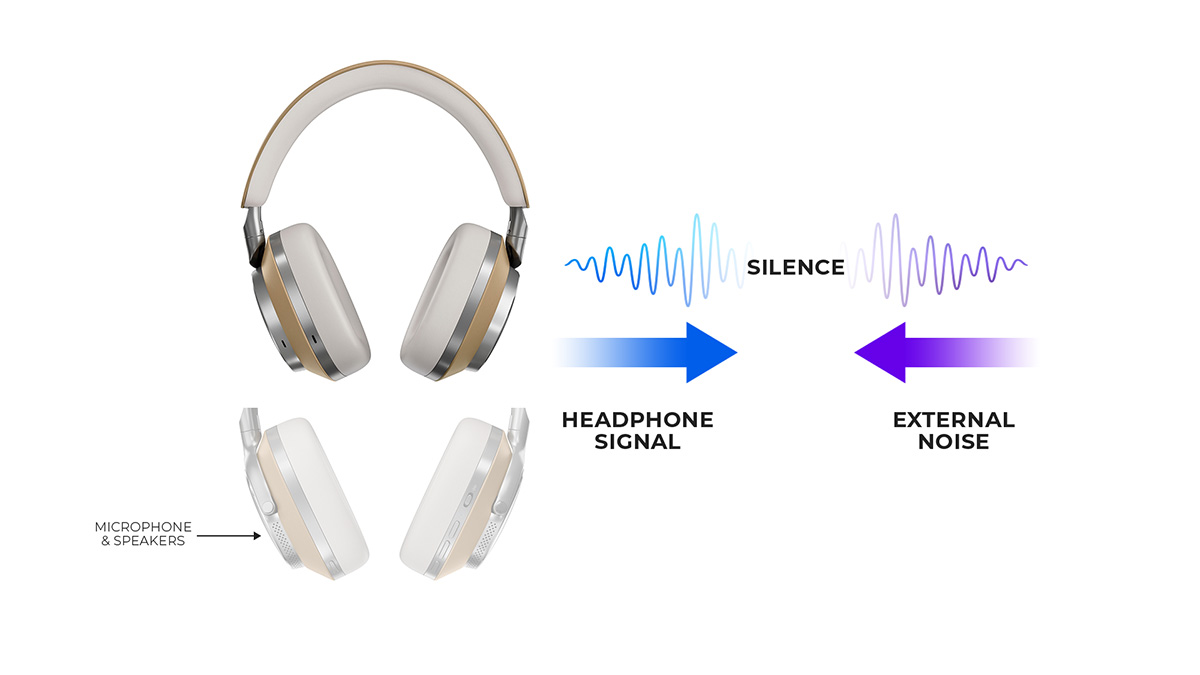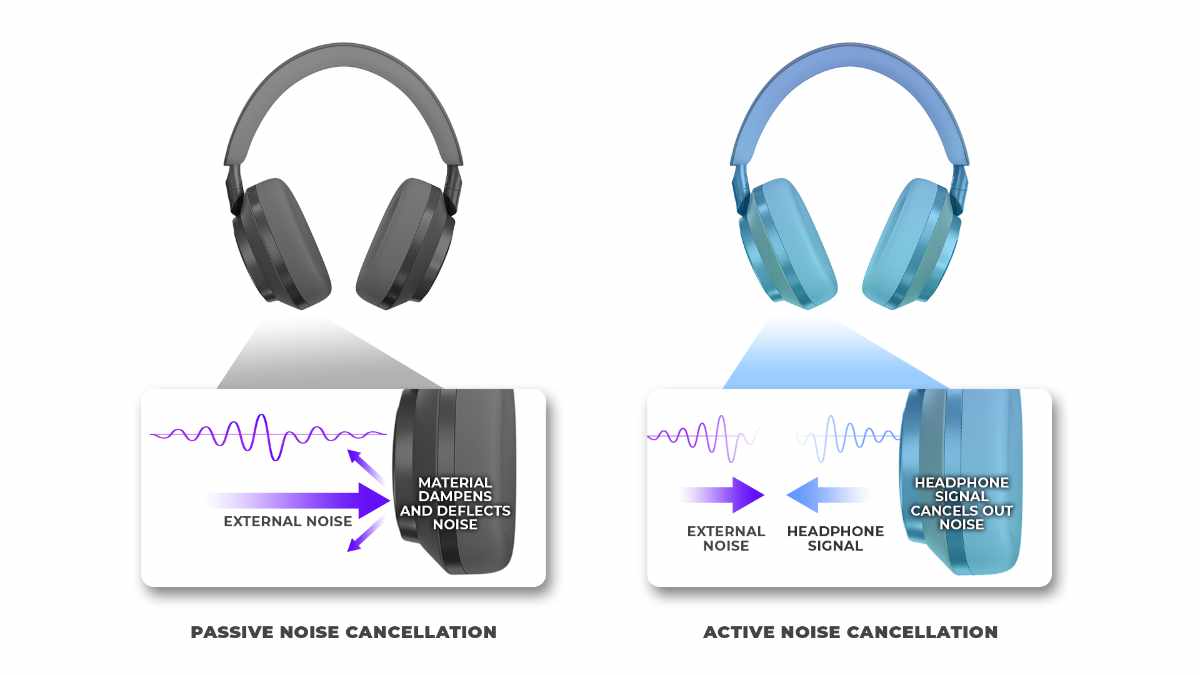Headphone Guide
Our comprehensive headphone guide offers valuable insights on selecting the perfect pair. Explore various types, driver technologies, impedance, frequency response, and open-back vs. closed-back designs. Whether you’re a seasoned audiophile or a curious beginner, this guide will empower you to make informed decisions and elevate your audio experience.
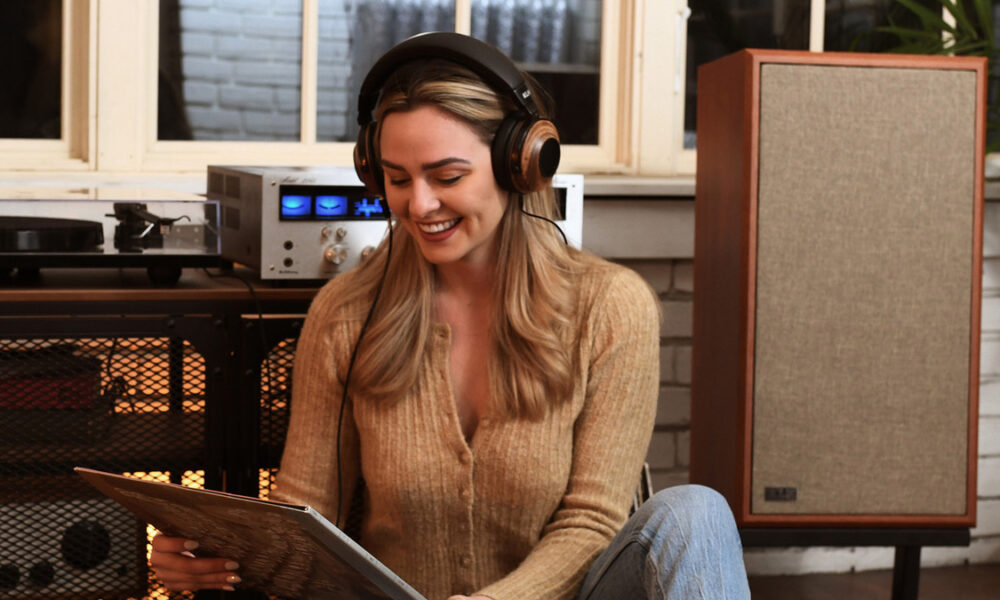
Our comprehensive headphone guide offers valuable insights on selecting the perfect pair. Explore various types, driver technologies, impedance, frequency response, and open-back vs. closed-back designs. Whether you’re a seasoned audiophile or a curious beginner, this guide will empower you to make informed decisions and elevate your audio experience.
Life is busy, life is loud, and, as a result, music is increasingly a part of how we take a step back. Headphones let us escape the hustle and bustle and slip into our Hi-Fi haven. However, headphones, specifically the technology within them, are constantly changing. Slowing down and assessing what designs and features make for a fantastic pair is imperative. With a million options and variations, deciding where you should put your money can be a headache. That's where we can help. We've been in the Hi-Fi audio space for years.
With how small they are, it’s easy to dismiss headphones as being uncomplicated, but the exact opposite is true. There are many types to choose from and a myriad of features to consider. We’ll review everything about headphones, including discussing terminology, parts, variations, and generally what makes a solid pair of headphones. Not only will you know how we determine what makes a pair of headphones worth it.
Differentiation and Terminology
One of the most confusing things at times about these wonderful devices is the terminology. Headphones, earphones, earbuds, over-ear headphones, in-ear headphones, and circumaural headphones are all terms used in the world of personal audio listening. At times, the supposed differences at marginal at best, but we think it’s important to go through a few of them. Each of them has one similarity that encompasses them: they are all designed to deliver sound directly to your ears. However, they differ in their form factor, design, and usage. Here are the main differences between each type:
- Headphones: This is also the most widely used and expansive term, often used to classify all the other types. At times though, they are associated with the circumaural and over-ear classifications. They tend to have large ear cups encircle the ears and are usually padded for comfort. These headphones typically offer excellent sound quality and noise isolation, making them ideal for use in quiet environments or critical listening. They are often bulkier and less portable than other types of earphones.
- Earphones: "Earphones" is general and can refer to any audio device worn in or near the ears. However, it is sometimes used interchangeably with "in-ear headphones" or "earbuds." In this sense, earphones generally include both in-ear headphones and earbuds.
- Earbuds: Earbuds are small, lightweight earphones that sit outside the ear canal. They rest on the outer part of the ear without forming a tight seal inside the ear. Earbuds are compact and convenient, making them popular for casual use, such as listening to music on the go or during workouts. However, they might not offer the same sound quality and noise isolation level as other headphones.
- Over-ear Headphones: As mentioned earlier, over-ear headphones are designed to cover the entire ear. They come in open-back and closed-back designs. Open-back headphones have ear cups with perforations that allow some sound to escape, creating a more natural and spacious soundstage. On the other hand, closed-back headphones have sealed ear cups that provide better noise isolation and prevent sound leakage. Audiophiles and professionals favor over-ear headphones for their superior sound quality and comfort during extended use.
- In-ear Headphones (In-ear Monitors or IEMs): In-ear headphones, also known as in-ear monitors (IEMs), are inserted directly into the ear canal. They come with soft tips that create a seal, providing better noise isolation and bass response than earbuds. In-ear headphones are highly portable and often come with multiple ear tip sizes for a custom fit. They are popular among travelers, musicians, and audio enthusiasts due to their excellent sound isolation and quality.
The main differences lie in their form factor, the way they sit on your ears, sound quality, and noise isolation capabilities.
Driver Types
Now that we’ve gone through some of the differentiations, we can discuss one of the key components of headphones: the driver. Headphone drivers are the components that convert electrical signals into sound waves you can hear. There are several types of headphone drivers, each with its unique characteristics. Here are the main ones:
- Dynamic Drivers: Dynamic drivers are the most common type of headphone driver in many consumer headphones. They consist of a diaphragm, voice coil, and magnet. When an electrical current passes through the voice coil, it creates a magnetic field that interacts with the permanent magnet, causing the diaphragm to vibrate and produce sound. Dynamic drivers are known for their wide frequency response and good sound quality. They are capable of delivering powerful bass and clear mids and highs.
- Balanced Armature Drivers: Balanced armature drivers are smaller and more efficient than dynamic drivers. They work on the principle of an armature, a tiny magnetic coil that moves a diaphragm back and forth to produce sound. Balanced armature drivers are commonly used in in-ear monitors (IEMs) because of their compact size. Since they can be tuned individually, multiple balanced armature drivers can be combined in a single IEM to handle different frequency ranges, resulting in a more detailed and accurate sound reproduction.
- Planar Magnetic Drivers: Planar magnetic drivers, also known as ortho-dynamic drivers, are known for their exceptional sound quality. They feature a thin, flat diaphragm suspended between two sets of magnets. When an electrical signal flows through the conductors embedded in the diaphragm, it interacts with the magnetic fields, causing it to move and produce sound. Planar magnetic headphones are praised for their fast response, reduced distortion, and precise sound reproduction, particularly in the midrange.
- Electrostatic Drivers: Electrostatic drivers are less common and usually found in high-end, audiophile-grade headphones. They work by placing an ultra-thin diaphragm between two charged plates. When an audio signal is applied, the diaphragm reacts to the electric field, producing sound. Electrostatic headphones are renowned for their unparalleled clarity, speed, and detail in sound reproduction. They require a specialized amplifier known as an electrostatic driver to power them.
- Bone Conduction Drivers: Bone conduction drivers are unique as they don't directly send sound into your ears. Instead, they conduct vibrations through the bones of your skull, bypassing the outer and middle ear. This allows you to hear sound while still being aware of your surroundings. Bone conduction technology is commonly used in specialized headphones for people with hearing impairments or for certain sports applications where situational awareness is crucial.
Each headphone driver type has benefits and drawbacks. When selecting headphones, it's essential to consider the driver type, as it greatly influences the sound signature and overall performance of the headphones.
Wired vs. Wireless
Probably one of the biggest decisions for choosing a pair of headphones is whether to go wireless or not. It’s a hot debate among the Hi-Fi community, with both sides having dedicated fan bases. The leaps in technology and capability being made in the wireless headphone department are nothing to scoff at, while wired headphones have been here longer and have the potential to be more reliable. Each has pros and cons, so let's break it down.
Wired
Headphones that are wired are essentially speakers on your ears. Much of the technology is the same, just scaled down to fit on your head. Many headphones use a 3.5mm jack directly connecting your audio device. However, it’s important to note that the Apple lightning cable and USBs are becoming increasingly popular alternatives. For instance, the USB-C is a dual-purpose cable. Some headphones and earbuds may utilize the connection type for audio. The great thing about wired headphones is that you get unprocessed, uncompressed audio, so sound quality has much more potential than wireless options. Also, when using wireless headphones, your only limit is your audio player's power. They allow you to plug in and play with nothing else to consider.
“This jack separates the signals into three paths: your left ear, right ear, and middle ground. This helps your headphones produce location and imaging.”
Plug-in and play sounds great, but it does mean you're bound to your cable. It seems minor, but we've all been irritated by our headphone cables getting snagged, unplugged, or worse, damaged. Many new devices rely on Bluetooth connections, and some companies, like Apple, have completely done away with audio jacks. Of course, there are adapters, but that can be an irritating extra step for some people.
Wireless
These headphones are newer to the scene. Thanks to even more recent advancements, some serious contenders have debuted. There are three forms of wireless headphones: Bluetooth, Radio Frequency (RF), and Infrared (IR). We'll focus on the most popular, Bluetooth. Instead of sending audio data through wires, Bluetooth headphones receive compressed audio data from your audio device. Once your headphones receive the data, it uses algorithms known as Bluetooth codecs to transcribe the data into the music you hear.
These codecs are constantly updated and becoming more efficient at avoiding playback issues like latency (the delay between your audio device and headphones). Despite those updates, your Bluetooth headphones still work with compressed audio, so sound quality won't be as pure as a wired connection. Also, because your Bluetooth headphones aren't connected directly to your device, they have an internal battery that needs to stay charged to work, which can be inconvenient.
All that's not to say that wireless headphones will sound bad or aren't worth it; many of them feel and sound amazing while having considerably long battery run times. Many will say the absolute best thing about wireless headphones is that they're, well, wireless. That means no cable snags and complete mobility-based convenience— it’s important to note that wireless headphones usually require a cable to charge them, and one cable type that is increasingly relied upon for that is the USB-C connector. Bluetooth compatibility is becoming the standard in many modern devices, so your headphones can work with almost anything you need.
Noise Cancellation
When writing, noise-canceling headphones are my saving grace. Noise cancellation can completely change how you experience music through headphones and maybe in general. If you've ever been on a flight, a loud bus ride, or a busy workplace with headphones, you know precisely how amazing noise cancellation can be or would have been. Luckily, almost every pair of headphones have some level of noise cancellation. There are two types of cancelations to consider: passive, which most headphones have, and active, which for me, is absolutely necessary for music on the go. Not only is it convenient, but by reducing outside sound interference, you can listen to your music at quieter volumes with the same level of satisfaction. Hearing loss is a severe threat to those who overuse headphones at high volumes, so you're actually protecting your ears by investing in headphones with good noise cancellation.
“Hearing loss is a severe threat to those who overuse headphones at high volumes, so you're actually protecting your ears by investing in headphones with good noise cancellation.”
Passive Cancellation
Passive cancellation is the most basic form of noise cancellation that headphones can have. Using multiple layers of high-density foam, passive cancellation involves insulating your ears from external sounds. Headphones that use better materials tend to do this job that much better. It can block out sounds up to around 20 decibels on average, making an incredible difference as you listen. Still, sometimes your environments are extra noisy, and you can't focus on the music as well as you want to. That's where active cancellation can take things up a notch.
Active Cancellation
Headphones that feature active cancellation most likely have passive cancellation as well. It goes beyond just blocking out outside sounds; it nullifies them. As outside sound waves come in, these headphones imitate them and play them back to you 180 degrees out of phase. Essentially, your headphones can negate the sounds around you by creating the opposite version of that sound. This ensures that the only thing you'll hear, within reason, is your beloved music.
Open-Back vs Closed-Back
Open-back and closed-back headphones are two primary designs that differ in how the ear cups are constructed. Each type offers distinct benefits and drawbacks, catering to different listening preferences and use cases.
Open-back headphones utilize ear cups with perforations or openings on the outside, allowing air and sound to pass through. These openings create an open pathway for sound to escape, designed to let some ambient noise in. Open-back headphones typically offer a more expansive and natural soundstage, making the audio feel like it's coming from a wider area beyond your ears. This creates a more immersive and wide sound experience, ideal for critical listening, gaming, and movies. Since the ear cups have openings, sound can leak out, meaning people around you can hear what you're listening to. This makes open-back headphones less suitable for use in quiet environments or when privacy is important.
As the sound waves are not trapped in the ear cups and can interact freely with the environment, the design allows for better airflow, reducing heat and pressure buildup around the ears during extended listening sessions. Open-back headphones provide minimal noise isolation, as external sounds can easily enter the ear cups. This makes them less suitable for use in noisy environments or during travel. Sound leakage can be a drawback in quiet environments or situations where you don't want to disturb others around you.
Closed-back headphones have sealed ear cups with no perforations, providing a complete enclosure around the ears. This design isolates the ears from the external environment. Closed-back headphones enhance noise isolation, blocking external sounds and preventing sound leakage. This makes them suitable for use in noisy environments or for private listening. The soundstage of closed-back headphones is generally more intimate, focused, and feels closer to your ears.
Closed-back headphones are also excellent for blocking out external noises, making them ideal for public places, offices, or commuting. The closed design reduces sound leakage, ensuring your audio remains private. Closed-back headphones may lack the wide soundstage and airy feel that open-back headphones offer, which might be less ideal for certain audio enthusiasts or specific applications like gaming. Some closed-back headphones may generate heat and pressure during extended use due to limited airflow around the ears.
Sound Quality
The sound quality in headphones can vary widely. Beyond testing headphones and listening for their performance at different ranges to decipher their quality, there are a couple of metrics to know: impedance and sensitivity. Understanding these can help ensure you get a total depth of sound and try to avoid anything that makes specific notes blend together.
Impedance measures how much electrical resistance the headphones provide to the audio signal. It is measured in ohms and determines how much power is required to drive the headphones. The higher the impedance, the more power is required to drive the headphones. Headphones with high impedance typically require a dedicated amplifier to drive them properly and deliver the best sound quality.
Sensitivity, however, refers to how loud the headphones can get with a given amount of power. It is measured in decibels per milliwatt (dB/mW) and determines how efficiently the headphones convert the electrical signal into sound. Headphones with high sensitivity can produce louder sound levels with less power, while headphones with low sensitivity require more power to reach the same volume level.
Both impedance and sensitivity can affect the overall sound performance of headphones. Headphones with high impedance can provide better sound quality but require more power and may not work well with portable devices such as smartphones or laptops. Headphones with high sensitivity, on the other hand, can produce loud and clear sound even with low-powered devices, but they may be more susceptible to distortion at higher volumes.
Sound quality is the big one. Of course, it's also the hardest to quantify. When assessing a pair of headphones' sound quality, you really just need to use them, and that's not easy if you haven't bought them yet.
Comfort
Have you ever worn a pair of headphones that feel like they're denting your skull and trying to erase your ears? It doesn't matter how amazing your headphones play audio if you can't bear to wear them for fear of head trauma. Comfort is such an important yet often underrated part of headphones. Ensuring they feel cozy, and snug is imperative, so listening to Hi-Fi music can be an integral part of your day.

Look for headphones with comfortable-looking ear pads and adjustability. You want something flexible but sturdy enough to stay on your head. You'll need ear pads that can fit your ears nicely without making them bear too much pressure. The lighter the weight, the easier it'll be on your head, so look for something light but still durable. These are all subtle balances, but you'll know how important all this is when you find the right pair.
Getting the Best Out of Your Headphones
One of the remaining things to note about headphones is a couple of essential accessories and equipment to consider that can enhance the audio experience with headphones include:
- Headphone Amplifiers: Headphone amplifiers are separate devices that boost the electrical signal from the audio source to the headphones, resulting in improved sound quality and increased volume. They are particularly useful for high-impedance headphones that require more power to drive them properly. Some headphone amplifiers also come with tone controls, equalizers, and other features that allow you to adjust the sound to your liking.
- Digital-to-Analog Converters (DACs): DACs convert digital audio signals into analog signals that can be played through headphones or speakers. They are especially useful when playing high-quality lossless audio files that require more processing power than your computer or mobile device can handle. Some DACs also come with headphone amplifiers built-in, making them an all-in-one solution for improving your audio experience.
These accessories and equipment can enhance the audio experience with headphones, but it's important to note that the actual impact on sound quality may vary depending on the headphones and audio equipment used.
Your Next Pair of Headphones
No matter where you are on your audiophile journey, headphones are just one of those things you'll need. What makes them so important is that they allow you to listen to your favorite music or your favorite anything on your terms. They allow you to isolate yourself no matter what's happening around you, which can be a powerful tool for work and relaxation. Finding the right pair for you can be a great feeling. If you invest in a good pair of headphones now, they'll pay you back in spades of audio-listening enjoyment.

